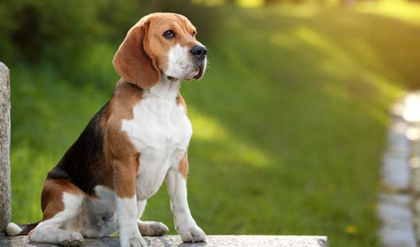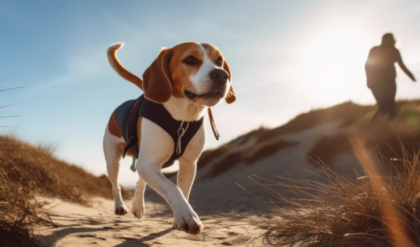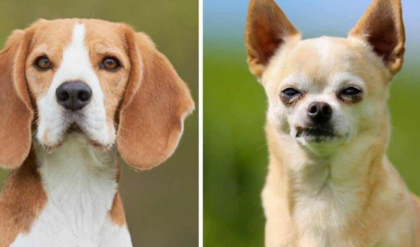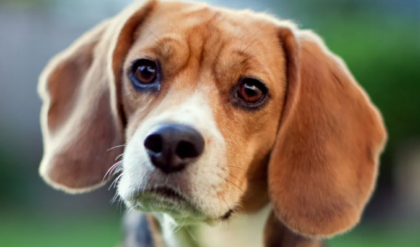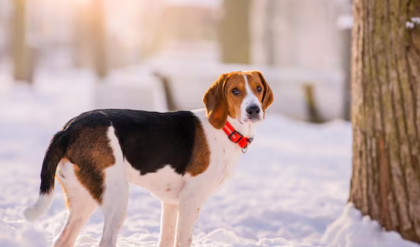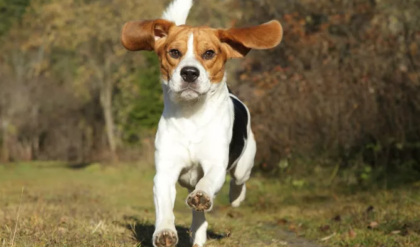Beagles are known for their lovable personalities and boundless energy, but they can also exhibit undesirable behaviors, such as biting. While this behavior is common in puppies, it’s important to address it promptly to prevent it from becoming a more serious problem. With patience, consistency, and the right training techniques, you can effectively train your Beagle puppy to stop biting. In this article, we will discuss 10 proven methods to help you achieve this goal.

Build Communication: Handle the Puppy Gently and Interact Positively
The first step in training your Beagle puppy to stop biting is to establish clear communication with them. This means handling them gently and interacting with them in a positive manner. Avoid rough handling or scolding, as these can further trigger biting behavior. Instead, focus on creating a bond based on trust and affection.
Gentle Handling
When handling your Beagle puppy, make sure to be gentle and avoid any actions that may cause them discomfort or fear. This includes avoiding sudden movements, loud noises, or pulling on their fur or tail. These actions can startle or agitate your puppy, leading to defensive biting.
Positive Interaction
Interacting with your puppy in a positive manner is crucial for building trust and establishing a strong bond. Use a soothing tone of voice when talking to your puppy and avoid any negative reinforcement, such as yelling or hitting. This will only make your puppy fearful and may escalate their biting behavior.
Socialize Early: Expose Your Puppy to Different People and Experiences
Socialization is an essential aspect of a puppy’s development, and it plays a significant role in preventing unwanted behaviors like biting. By exposing your Beagle puppy to different people, environments, and experiences, they will learn how to interact appropriately with others and understand acceptable behaviors.
Take Your Puppy on Walks
Taking your puppy on walks is an excellent way to introduce them to new sights, sounds, and smells. It also provides an opportunity for them to interact with other people and dogs in a controlled environment. Make sure to keep your puppy on a leash and supervise their interactions to prevent any potential biting incidents.
Visit Different Places
Introducing your puppy to different places, such as parks, pet stores, or even your friend’s house, can help them become more comfortable in various environments. This will also expose them to different types of people, which will help them learn how to interact with strangers without feeling threatened.
Introduce Your Puppy to Friendly People and Dogs
Socializing your Beagle puppy with other friendly dogs and people is crucial for their social development. It will teach them how to play and interact appropriately without resorting to biting. Make sure to choose safe and supervised playmates for your puppy to prevent any aggressive behavior.
Distract with Toys: Provide an Outlet for Your Puppy’s Energy
Puppies have a lot of energy, and they need an outlet to release it. Biting may be a result of pent-up energy, so providing your puppy with appropriate toys to chew on can help redirect their attention away from biting.
Keep Plenty of Chew Toys Accessible
Make sure to have plenty of chew toys accessible for your puppy to play with. These can include rubber toys, ropes, or stuffed animals. Choose toys that are appropriate for their age and size to prevent any choking hazards. You can also rotate their toys to keep them interested and prevent boredom.
Encourage Playtime with Toys
When your puppy attempts to bite, redirect their attention to a toy and encourage them to play with it instead. Praise them when they engage with the toy and avoid any rough play that may lead to biting. This will not only provide an outlet for their energy but also reinforce positive behavior.
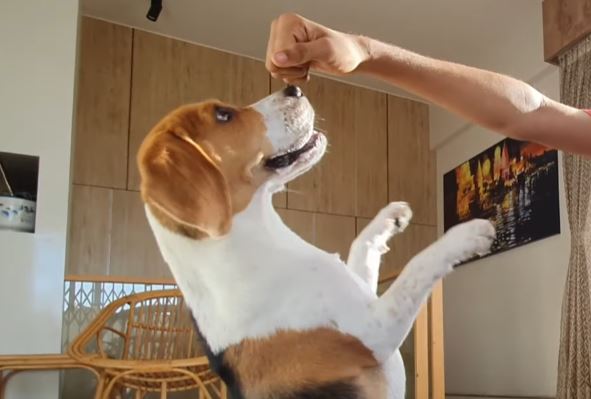
Praise Good Behavior: Reward Your Puppy for Interacting Without Biting
Positive reinforcement is an effective way to train your Beagle puppy to stop biting. By rewarding them for good behavior, you are reinforcing the desired actions and encouraging them to repeat them in the future.
Use Verbal Praise
When your puppy interacts with you or others without biting, make sure to praise them with a positive tone of voice. This can be as simple as saying “good boy/girl” or “well done.” Verbal praise will let your puppy know that they have done something right and will encourage them to continue behaving well.
Give Treats
Treats can also be used as a form of positive reinforcement. When your puppy behaves well, give them a small treat as a reward. Make sure to choose healthy treats and avoid overfeeding your puppy. You can also use treats during training sessions to reinforce positive actions.
Use Treats: Reinforce Positive Actions
In addition to using treats for positive reinforcement, they can also be used as a tool to train your Beagle puppy to stop biting. Here are two methods you can try:
Treats for Distraction
When your puppy attempts to bite, redirect their attention to a treat instead. Hold the treat in front of their nose and guide them away from the object or person they were trying to bite. This will not only distract them from biting but also teach them to associate biting with a negative consequence (i.e., losing the opportunity to get a treat).
Treats for Training
You can also use treats during short training sessions to teach your puppy to respond to commands. For example, when teaching the “leave it” command, start by showing your puppy a treat and then placing it on the ground. When they go to grab the treat, say “leave it” and wait for them to back away. Once they do, reward them with the treat. This will teach your puppy to listen to your commands and not bite when told to “leave it.”
One-Minute Training Sessions: Engage Your Puppy in Short, Regular Training Sessions
Beagles are intelligent dogs and can quickly learn new behaviors through consistent training. However, their attention span may be limited, so it’s essential to keep training sessions short and engaging.
Keep Training Sessions Short
Puppies have a short attention span, so it’s crucial to keep training sessions short (no more than 5-10 minutes) and frequent. This will prevent your puppy from getting bored or overwhelmed and will help them retain what they have learned.
Make Training Fun
Training should be a fun and positive experience for both you and your puppy. Use treats, toys, and praise to keep your puppy engaged and motivated. You can also incorporate playtime into training by teaching your puppy to fetch or do tricks.
Address Underlying Issues: Consult with a Veterinarian or Trainer
If your Beagle puppy continues to exhibit biting behavior despite your efforts, there may be underlying medical or behavioral issues that need to be addressed. In this case, it’s best to consult with a veterinarian or professional dog trainer for guidance.
Medical Issues
Sometimes, biting behavior can be a result of underlying medical issues, such as teething, allergies, or pain. If you suspect that your puppy’s biting is due to a medical issue, take them to a veterinarian for a check-up.
Behavioral Issues
In some cases, biting behavior may be a sign of underlying behavioral issues, such as fear, anxiety, or aggression. A professional dog trainer can help identify the root cause of the behavior and provide you with a tailored training plan to address it.
Conclusion
Biting is a common behavior in puppies, but it’s crucial to address it promptly to prevent it from becoming a more serious problem. By following these 10 effective ways to train your Beagle puppy to stop biting, you can establish clear communication, socialize them early, provide an outlet for their energy, reinforce positive behavior, and engage in regular training sessions. Remember to be patient, consistent, and use positive reinforcement to achieve the best results. If concerns persist, consult with a veterinarian or professional dog trainer for further guidance. With proper training and care, your Beagle puppy will grow into a well-behaved and loving companion.

